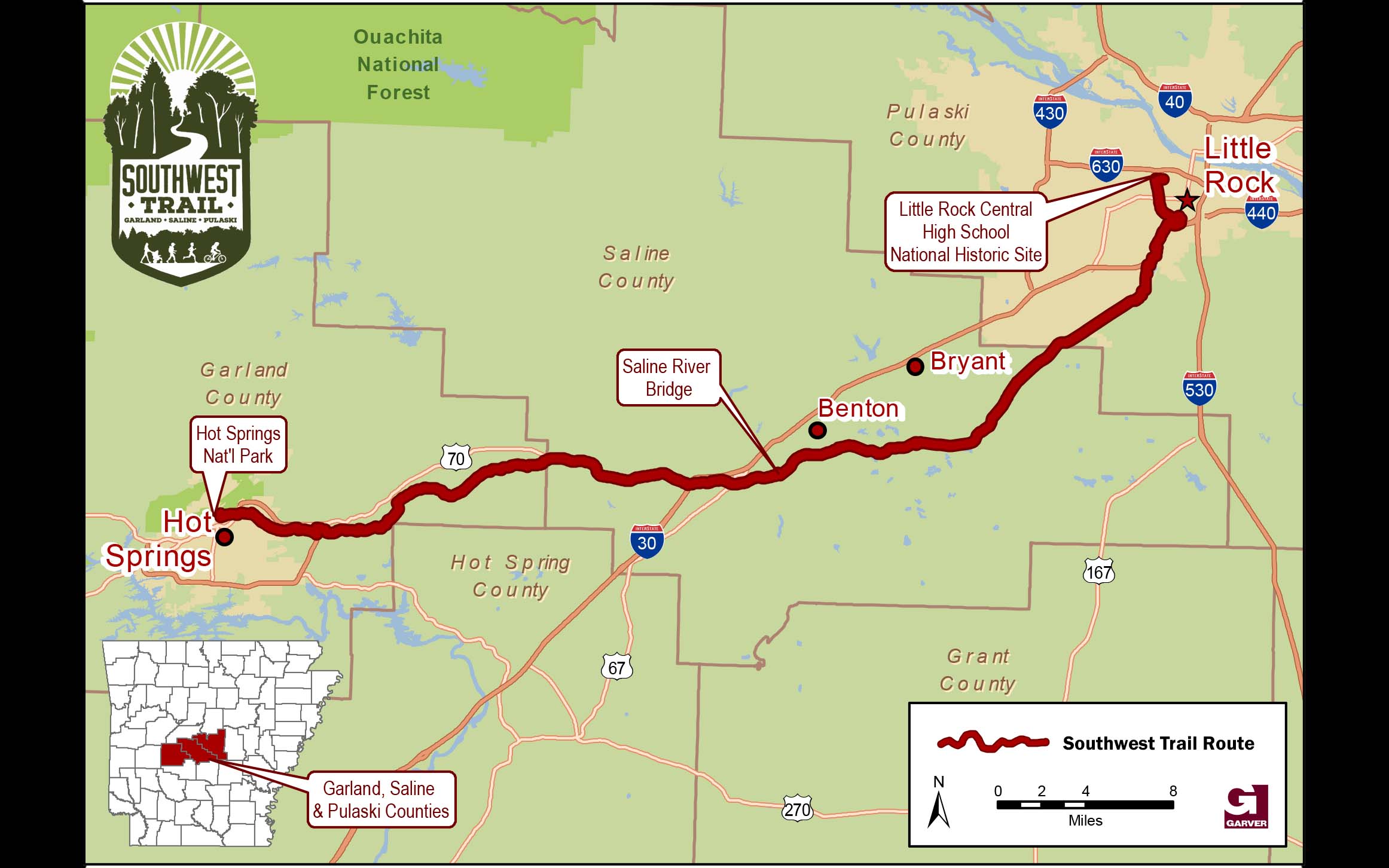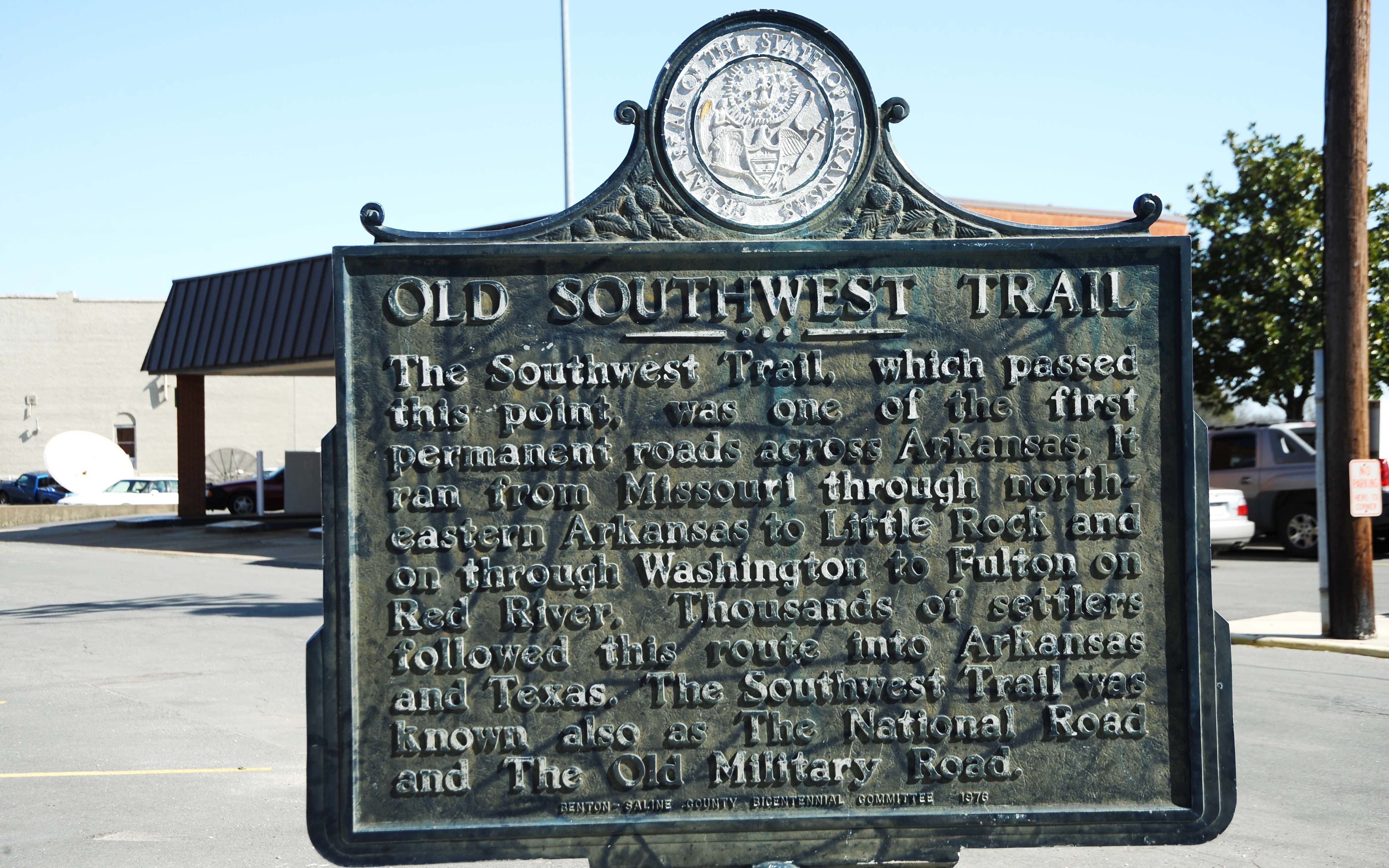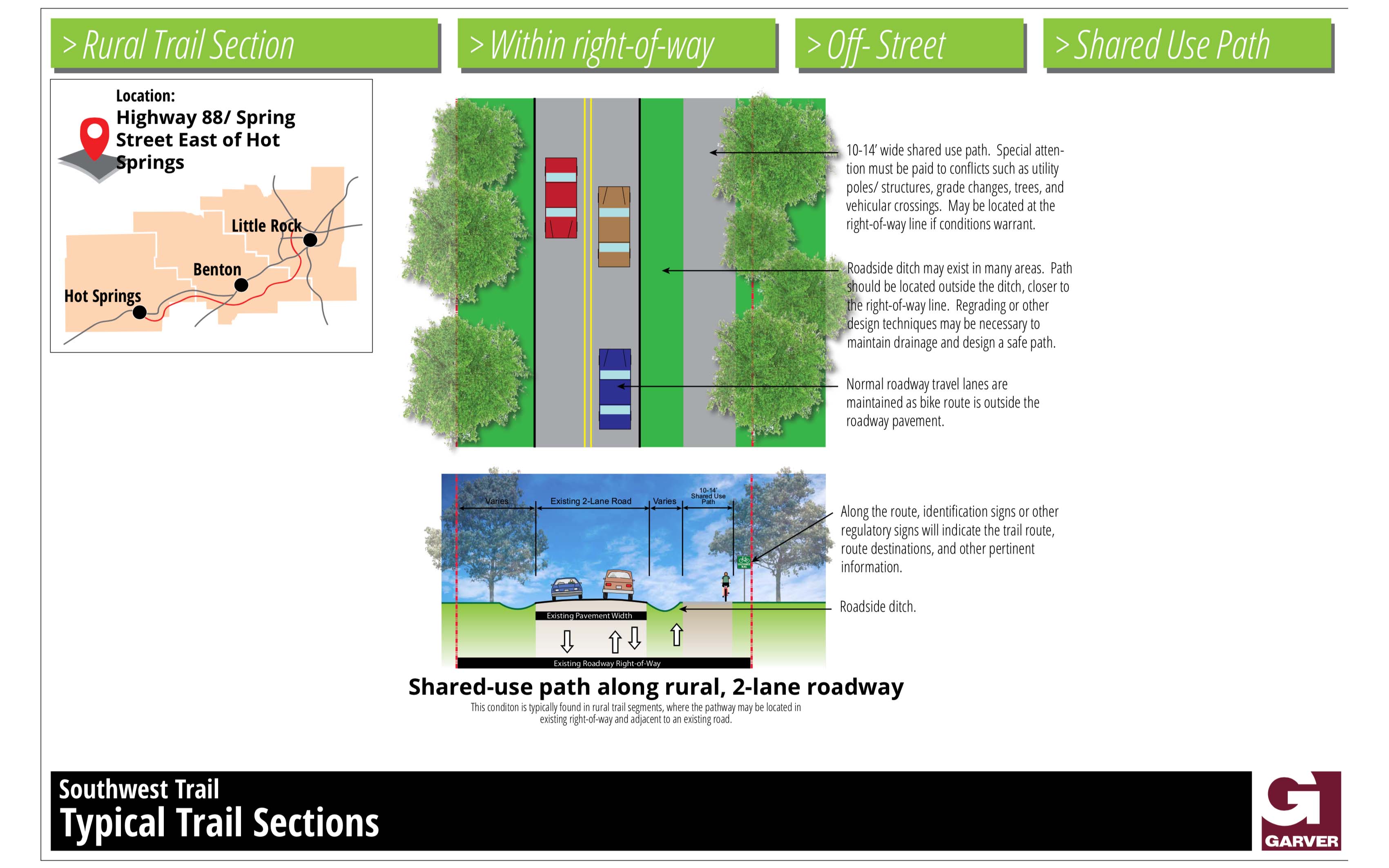There’s a trail blazing …
November 25 - December 1, 2019
By Cait Smith
The Natural State is known for its grand national parks. From hiking Pinnacle Mountain to whitewater rafting on the Buffalo National River, Arkansas houses a slew of destinations for recreational use. Naturalists and explorers from all over the world can enjoy the outdoors in the midst of the calm yet ever-changing Arkansas weather.
However, it seems a new venture has spurred the community. What was once a concept has manifested into something that will stretch on for miles. The Arkansas’ Southwest Trail, a multi-use path connecting Hot Springs National Park, the Old River Bridge on the Saline River, the Little Rock Central High School Historic Site, and the Arkansas River Trail System will allow for pedestrians and bicyclists to safely enjoy outdoor recreation. This upcoming trail has the potential to bring local benefits such as providing a stimulus to the local and regional economies as well as national attraction for the state.
Intentions for the Southwest Trail was a combination of history and talk. Dating back to the 1800s, the Southwest Trail, formerly known as the Old Military Road, served as a network of routes connecting the mid-Mississippi River Valley (the St. Louis/St. Genevieve area of Missouri) to the Red River valley (northeast Texas). Most of the trail crossed Arkansas from northeast to southwest, and by the 1830s, more than 80 percent of Arkansas territory’s population had entered through the Southwest Trail. Usage of the trail north of the Arkansas River declined in the late 1800s, but the trail south of the river remained in use decades longer.
Years later, talk of a purposeful trail arose from bicyclists, enthusiasts, and the general public – so much so that government officials began taking notice. In doing so, the Southwest Trail went from concept to reality. Pulaski, Saline, and Garland counties have all joined together for this large project and hired Garver – an engineering, planning, architectural, and environmental services firm – as the designer for the Southwest Trail.
The first priority for building the trail is connecting the Southwest Trail with the Arkansas River Trail to create a quality connection that encourages cross use. Mile 0 of the Southwest Trail will link the two rail-trails at an active Union Pacific track a few miles from Little Rock Central High School. South of the connection – as the trail and active tracks go under a bridge – will call for a 32-foot buffer and a grade separation between the trail and the tracks.
Alignment of the trail is another challenge the team will work to solve. Garver’s project manager, Wallace Smith, explained further, “We’re in the current phase called Environmental Assessment. We look at not only the initial alignment but other possible side alignments or options to be aligned with. Then we examine the ramifications of each of those. [...]. We’re looking for wetlands, endangered species, and Native American artifacts in the area. Also, we’re looking at owned properties in these areas.” Some property owners are against the trail as it can affect their lands. Smith said this is understandable; him and his team at Garver are working diligently to find the right alignment options for the trail.
As of November 2019, Arkansas’ Southwest Trail stated that the trail alignment has been studied and the project team anticipates a preferred alignment will be recommended by early 2020 for public comment.
Smith also mentioned cost is a concern when construction starts. “All the funding for the project has been achieved through various grants, which is great. But for the actual construction, it’s going to cost more,” he said. Smith proclaimed that they could receive funding for the portion of the trail through a mix of private funding and different municipalities or counties.
Aside from setbacks, Garver and the three counties are weighing heavily on the public’s opinion when it comes to the Southwest Trail. “With any high-profile project, the keywords you love are users, stakeholders, and government officials. Our focus is to get a majority of people behind the project,” Smith said. Many Arkansans are standing behind the project because it will elevate one’s property values, improve the health of the community, and open up some of Arkansas’ most scenic spots to bicyclists and hikers. Others say this trail will help several small towns along the proposed route struggling to attract visitors.
More importantly, the public is pleased to be a voice in this momentous act. The Arkansas’ Southwest Trail will continue hosting meetings for the public in Pulaski, Saline, and Garland counties. The next round of public meetings is anticipated in spring 2020.
“Once the main trail is built, other entities will start building side trails to connect to the trail. Eventually, you will see large bicycle groups or you will see people from out of state coming in riding the trails. It’s a no-lose situation,” said Smith.
As all of Central Arkansas anxiously awaits, one thing is for sure, the Southwest Trail will transform the Natural State as we know it.
For the latest updates on the Southwest Trail, go to https://swtrail.transportationplanroom.com/. To ensure inclusion on the project contact list, email PublicInvolvement@GarverUSA.com.
Sources: Arkansas’ Southwest Trail, Trailstorails.org
PHOTO CAPTION:
1. Gaze upon Arkansas’ newest and forthcoming rail-trail venture, the Southwest Trail. This path will connect the Little Rock Central High School Historic Site, the Old River Bridge on the Saline River, and Hot Springs National Park for recreational use. The national attraction will connect people, communities and economies for a stronger region. (Photo courtesy of Arkansas’ Southwest Trail)
2.,3.,4. Southwest Trail Typical Trail sections for Benton and Saline County, South of Little Rock in Pulaski County, and Highway 88/Spring Street East of Hot Springs. To view the rest of the Typical Trial sections, go to https://swtrail.transportationplanroom.com/. (Photos courtesy of Arkansas’ Southwest Trail)
5. The Southwest Trail in Arkansas became a major emigration route in the 1820s. Many travelers who chose not to move on the state’s waterways found the trail especially appealing. The trail was eventually commemorated in the Historic Washington State Park, northwest of Hope. (Source: Arkansas Department of Parks & Tourism)







